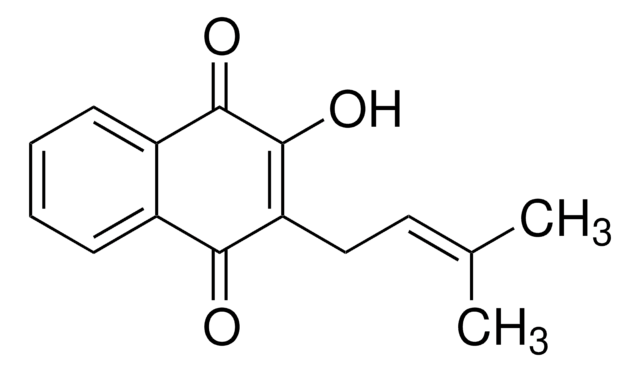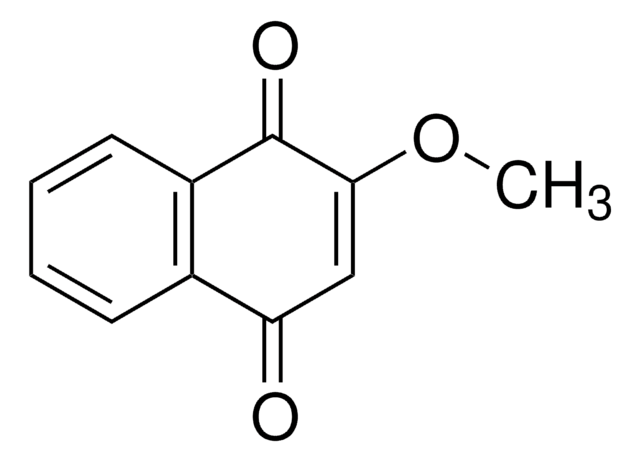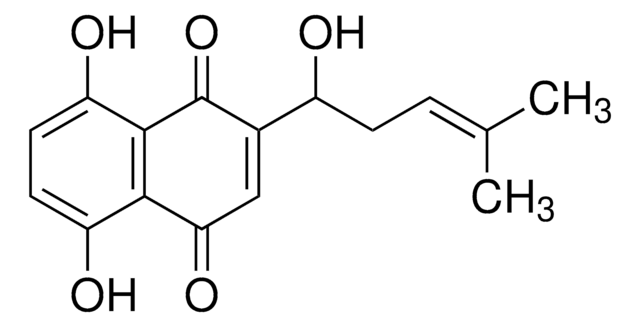Key Documents
142905
Lapachol
98%
Synonim(y):
2-Hydroxy-3-(3-methyl-2-butenyl)-1,4-naphthoquinone, Natural Yellow 16
About This Item
Polecane produkty
Poziom jakości
Próba
98%
Postać
solid
mp
141-143 °C (lit.)
rozpuszczalność
ethanol: soluble 10 mg/mL, clear, light yellow to yellow
grupa funkcyjna
ketone
ciąg SMILES
C\C(C)=C\CC1=C(O)C(=O)c2ccccc2C1=O
InChI
1S/C15H14O3/c1-9(2)7-8-12-13(16)10-5-3-4-6-11(10)14(17)15(12)18/h3-7,18H,8H2,1-2H3
Klucz InChI
CIEYTVIYYGTCCI-UHFFFAOYSA-N
Szukasz podobnych produktów? Odwiedź Przewodnik dotyczący porównywania produktów
Opis ogólny
Zastosowanie
Działania biochem./fizjol.
Hasło ostrzegawcze
Warning
Zwroty wskazujące rodzaj zagrożenia
Zwroty wskazujące środki ostrożności
Klasyfikacja zagrożeń
Acute Tox. 4 Oral
Kod klasy składowania
11 - Combustible Solids
Klasa zagrożenia wodnego (WGK)
WGK 3
Temperatura zapłonu (°F)
Not applicable
Temperatura zapłonu (°C)
Not applicable
Środki ochrony indywidualnej
dust mask type N95 (US), Eyeshields, Faceshields, Gloves
Wybierz jedną z najnowszych wersji:
Masz już ten produkt?
Dokumenty związane z niedawno zakupionymi produktami zostały zamieszczone w Bibliotece dokumentów.
Klienci oglądali również te produkty
Nasz zespół naukowców ma doświadczenie we wszystkich obszarach badań, w tym w naukach przyrodniczych, materiałoznawstwie, syntezie chemicznej, chromatografii, analityce i wielu innych dziedzinach.
Skontaktuj się z zespołem ds. pomocy technicznej













